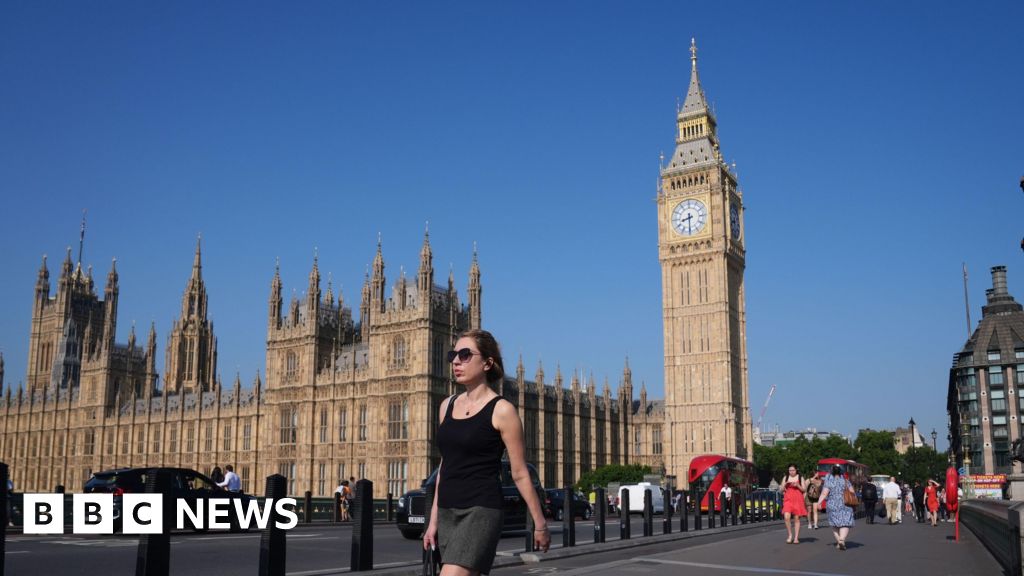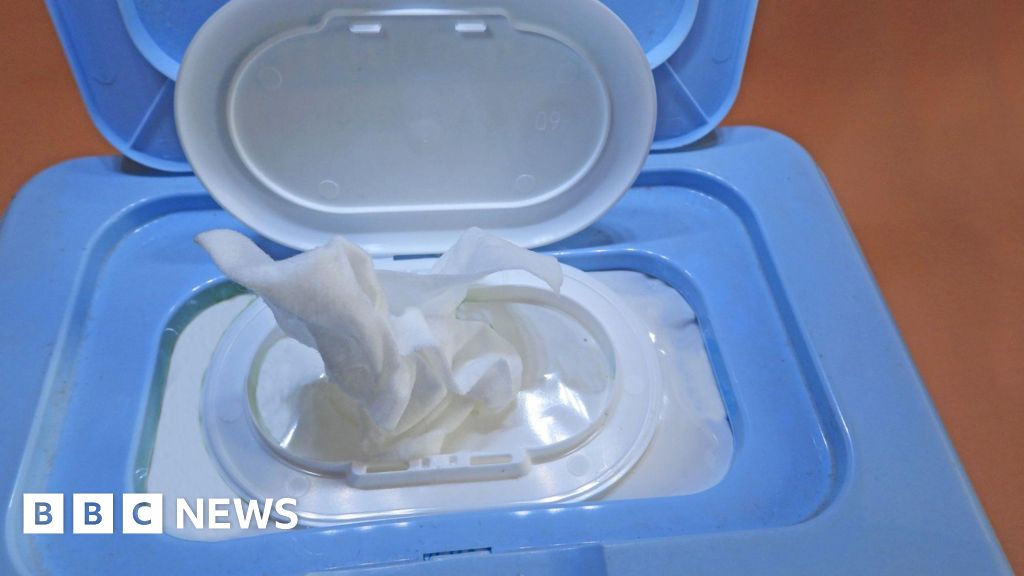 PA Media
PA MediaThe UK has recorded its hottest day of the year with temperatures passing 32C, as part of the country entered a heatwave.
A temperature of 32.2C was recorded in Kew, London – higher than the previous record for 2025 of 29.4C in Suffolk on 13 June.
Suffolk became the first place in the UK to officially enter a heatwave on Thursday after temperatures passed 27C for the third day in a row.
Amber heat health alerts are in place across the whole of England until 09:00 BST on Monday, as the UK Health Security Agency (UKHSA) warned that increased pressures on health and social care services were likely.
Temperatures will widely be between 27C and 30C on Thursday across east Wales, the Midlands, and East and South East England with a few locations around Greater London and the home counties reaching 31C.
Elsewhere, temperatures will climb to between 23C and 27C though along the coast it will feel cooler, with temperatures sitting about 20C.
For a heatwave to be declared by the Met Office a threshold temperature needs to be met for at least three consecutive days.
The threshold varies from 25C across the north and west of the UK, to 28C in parts of eastern England.
In Suffolk, the threshold is 27C, and temperatures above this were recorded in the village of Santon Downham for three days in a row – resulting in a heatwave being declared.
A heatwave could also be declared in Lincolnshire on Thursday, as some locations in the county have already had two consecutive days where the temperature has passed the threshold of 27C.
In London, where the threshold is 28C, a heatwave could be declared on Friday, as the temperature has now passed that figure for two days in a row.
It follows a period of high temperatures across the UK with yellow heat health-alerts having previously been in place.
The alert system works in conjunction with the Met Office but has a focus on health risks using four levels of warning: green, yellow, amber and red.
An amber warning means the whole health service is likely to be affected by the hot weather.
Among examples given by UKHSA are difficulties managing medicines, the ability of the workforce to deliver services and internal temperatures in care settings exceeding the recommended thresholds.
The agency also refers to a possible rise in deaths – particularly among those aged 65 or over or with health conditions – as well as health risks to the wider population.
 PA Media
PA MediaThe rising temperatures are down to an area of high pressure situated across the UK which, with a south-easterly wind, draws in hot weather from other parts of Western Europe.
Friday will again see temperatures widely in the mid to high twenties across the UK, with a few spots in South East England once again exceeding 30C.
Northern and western parts of the UK will see a slight fall in temperature on Saturday with the risk of some showers or thunderstorms.
For central and eastern England, Saturday will be the peak in the heatwave with temperatures rising to between 30 and 33C, although the Met Office has suggested the peak could be as high as 34C.
Regional fire services have issued warnings about water safety amid the high temperatures.
Pam Oparaocha, assistant commissioner for prevention and protection at the London Fire Brigade, warned that strong currents, underwater hazards and cold water shock “can be deadly”.
“With warm weather and school holidays on the horizon, we want people, especially young people, to enjoy our waterways safely, and that starts with education,” she added.
“It’s important to know the risks and to familiarise yourself with lifesaving equipment like throwlines, which are available along many of London’s waterways.”
 Daves Patch/Weather Watchers
Daves Patch/Weather WatchersOther organisations have also provided advice over recent days.
British Heart Foundation (BHF) told those with heart conditions to take precautions as high temperatures can put extra strain on the heart.
Age UK encouraged people to check in on older relatives, friends and neighbours.
A change in wind direction to a westerly on Sunday is set to cause the heatwave to break and all parts will be a little cooler.
Although eastern areas won’t be as hot, temperatures will still be in the mid to high twenties.
 PA Media
PA MediaClimate change is continuing to drive global temperatures upwards and make extreme weather events more likely.
Leading scientists on Thursday warned that there were as little as three years left to limit global warming to 1.5C – the target that had been set by the Paris agreement in 2015.
Nearly 200 countries agreed to try to limit global temperature rises to 1.5C above levels of the late 1800s, with the aim of avoiding some of the worst impacts of climate change.
Last year was the hottest year on record and the first above the threshold – though a single year does not constitute a breach of the agreement.
The Met Office said heatwaves were 30 times more likely to occur than before the industrial revolution – and were projected to become even more common, potentially occurring every other year by the 2050s as greenhouse gas concentrations continue to rise.

















Leave a Reply